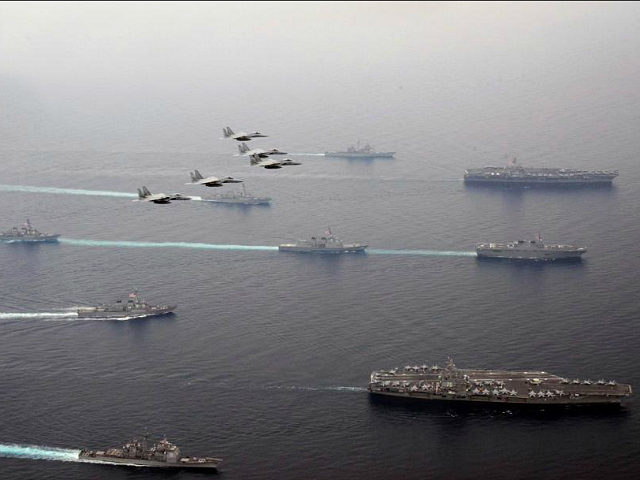Japan unveiled its highest defense budget since World War II on Friday, a $46 billion increase over last year that brings the total to $860 billion. Included in the budget is funding for cruise missiles capable of hitting Pyongyang in a pre-emptive strike against North Korea.
The budget also includes funding for defense against North Korean missiles, including interceptors that can theoretically hit intercontinental ballistic missiles before they re-enter Earth’s atmosphere, plus upgrades to the last-ditch Aegis and Patriot systems currently protecting Japan.
About $2.4 billion is allocated for purchases of equipment through the U.S. government’s Foreign Military Sales system, a 15 percent increase over 2016. President Donald Trump publicly encouraged Japanese Prime Minister Shinzo Abe to buy more American-made equipment, in addition to increasing Japanese defense spending overall. Another prominent purchase mentioned in the budget is the Norwegian Joint Strike Missile, an anti-ship weapon.
Japanese defense spending will now consume over 5 percent of the annual budget and about 1 percent of Japan’s Gross Domestic Product. That is still quite low compared to other advanced nations, including the United States, which spends 3.3 percent of GDP on defense. 2018 will be the sixth year in a row the Japanese defense budget has increased.
“Rather than a reflection of the prime minister’s desire to revise Japan’s pacifist, war-renouncing constitution, the increase is more in response to mounting military tensions in East Asia, chief among them North Korea’s increasingly provocative behavior,” Nikkei Asian Review observed.
Nikkei Asian Review quotes some analysts who worry about Japan’s ability to handle increased military spending, since the country is still struggling to deal with a demographically-driven crisis in entitlement spending—in sum, a shortage of young workers to finance benefits for an aging population.
Deutsche Welle worries that increased purchases from the United States will curtail domestic Japanese military initiatives, such as the F-3 advanced stealth fighter, which was envisioned as a counter to the latest generation of Chinese fighter jets.
Most reports on the new Japanese defense budget cite the looming North Korean menace, but Kyodo News notes that China has been doing a bit of looming as well. Some of the line items in the Japanese budget are arguably more directed at Chinese aggression against disputed islands than North Korea’s nuclear insanity, including two new destroyers and a new submarine. There is also a significant outlay to construct military facilities and troop barracks near the disputed Senkaku Islands in the East China Sea, and funding for research into long-range glide bombs that would be “useful for operations to retake invaded remote islands.”
There is some disagreement about whether Japanese defense spending has peaked. Some analysts say further increases can be expected in the future, but Kyodo News quotes the Defense Ministry describing 2018 as the final year of a five-year build-up and predicting that “most of the scheduled major procurements will be achieved through the latest budget, except for some plans, such as the scandal-hit procurement of the Maritime Self-Defense Force multipurpose helicopters.”

COMMENTS
Please let us know if you're having issues with commenting.